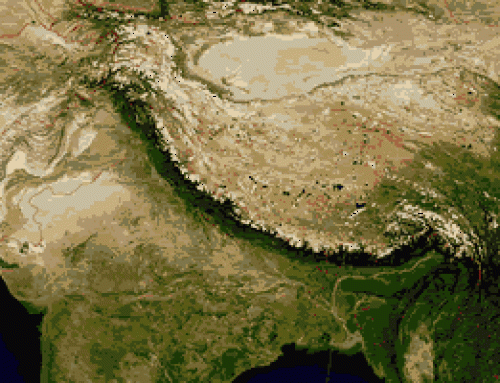The Romans learned of silk in the second century before the Common Era. Silk is a beautiful fabric that is soft and seems to glow. Clothing made of silk was a source of pride and a sign of great wealth for the Romans. Even the smallest pieces of silk would be proudly displayed by wealthy Romans.
The silk that Romans proudly showed off came from China, and the Chinese were careful to keep the secret of how they made the beautiful fiber. We know today that silk is made from a sticky substance produced by silkworms.
Silkworms are not actually worms but tiny caterpillars of silk moths. When silkworms hatch, they are fed mulberry leaves until they are big enough to spin cocoons. The cocoons are boiled, and the shimmering fibers are extracted and woven into silk.
Silk traveled west to Rome and other parts of Europe on what historians would later call the Silk Road. The Silk Road was not an actual road but a 4,000-mile-long network of trade routes that connected China to Europe, the Middle East and North Africa. Very few people traveled the entire length of the Silk Road. Trade resembled a chain, with each trader and segment of the trade route representing a link in the chain.
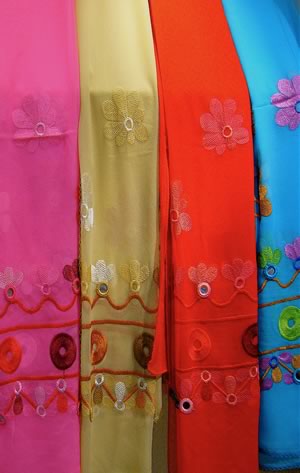
Silk_Scarves
These scarves are made from silk, a beautiful, soft and fabric seems to glow.
In addition to silk, Chinese merchants sold tea, spices, and jade. Jade is a hard, shiny stone used to create beautiful carvings. In exchange, the Chinese received gold, silver, precious stones, glass, ivory, horses, elephants, and wool.
Many Europeans first became aware of China when Alexander the Great expanded his empire along the Silk Road into Central Asia. In 329bce, Alexander founded the city of Alexandria Eschate (“Alexandria the Furthest”) about 400 miles west of the Chinese frontier. In the following centuries, trade grew between the Roman Empire in the West and the equally extraordinary Han Dynasty in China.

Silkworms
Silkworms are not actually worms, but the tiny caterpillars of silk moths.
Travel was very dangerous along the Silk Road. Merchants who traveled the routes were often robbed and killed. In the thirteenth century, Mongol armies used the Silk Road to expand their empire. The first Mongols on the Silk Road were nomadic warriors who attacked and looted the markets along the trade routes. In time, the Mongols developed their own efficient trade along the Silk Road.
In 1269, Marco Polo traveled from his home in Italy to China on the Silk Road. Marco Polo dictated a book about his adventures, but his stories of China were so amazing that many Europeans could not believe they were true.
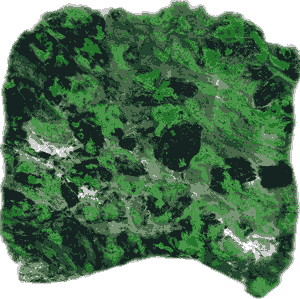
Jade
Jade is a hard, shiny ornamental stone used to create beautiful carvings.
Along with goods, ideas also traveled the Silk Road. Buddhism was introduced to China during the Han Dynasty by missionaries from India. Over time, Buddhism lost much of its influence in India but became very popular in China.
Devastating illness also traveled this trade route. The Black Death took the lives of nearly half of the people of Europe between 1348 and 1350. Scientists believe the plague began as a bacterial disease in Central Asian rats. People on land were usually safe because the rats did not like the smell of their horses, but at the western edge of the Silk Road, goods were loaded into ships on the Black Sea. The ships transported goods to cities throughout Europe. In addition to sailors, the ships were home to rats and fleas. Fleas living on the blood of the rats bit the sailors on board. When the sailors returned to their European homes, they carried the deadly, contagious disease.
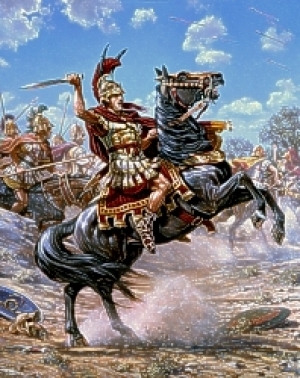
Alexander_the_Great
Alexander the Great created the largest empire of his time
The Silk Road lost its importance when the Mongol Empire disintegrated because Mongols no longer policed the trade routes. The Silk Road became even more dangerous when bandits learned to make Chinese gunpowder. The end of the Silk Road came by the fifteenth century, as Portuguese sailors learned to circumnavigate Africa. The new sea routes created by the Portuguese were faster and safer than the Silk Road.
Resources
Download this lesson as Microsoft Word file or as an Adobe Acrobat file.
Mr. Donn has an excellent website that includes a section on China.
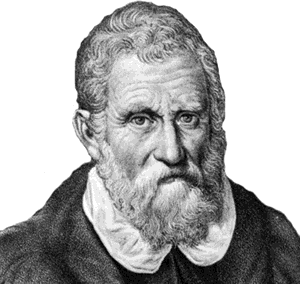
Marco_Polo
Marco Polo (1254 – 1324) claimed to have traveled the Silk Road in the thirteenth century. A book about his adventures introduced Europeans to China and the cultures of the Silk Road.


